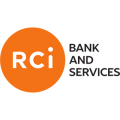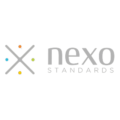On the horizon of a new decade of payments – and the possibility of monetizing transactions – on the horizon is vertical payment solutions. Vertical payment solutions are nothing new. But the idea of introducing payments internally, as part of software offerings – and in return to help merchants and markets integrate payments into the verticals they choose – is gaining traction and will continue to grow. do so in the 2020s and beyond, as MONEYCORE experts see. But to get a glimpse of the future, it’s important to look at the past. And the end of this year 2019 is a good time to take stock of what we thought we were, where we are and where we are definitely not.
The way we were:
“Back then,” in the early 2010s, “most payment products were sold through Independent Sales Organizations (OVIs), and this ‘was just the start of the emergence of what we might call the integrated software vendor,’ where main processors and acquirers partnered with software vendors. Today, OVIs may not be as forceful as they used to be, but they are still seen as a vital part of the payments ecosystem – they are simply distributed differently.
This roadmap is particularly important in the context of the consolidation which marked the mega-mergers of the past year, which, according to MONEYCORE analyzes, represents a rush for to maintain market shares within sectors of activity that risk becoming commonplace in the coming decade. Our expert predicted that in the coming year 2020, companies will have to digest these newly merged acquisitions, which will provide many opportunities for disruptors to continue to tackle the intersection of software and payments. Whether Payments Open The Vertical Focus After all, “at the heart of every business is the need to raise and pay money … what you’re going to see, and what we’re already seeing, it’s the customization of solutions that are vertically focused. ” says our expert. He drew a parallel with the cable industry, where subscribing to a cable operator years ago meant getting 600 channels, even if you got software or software caused payments in its environment, our expert replied that it was more about the latter. As he pointed out, just a few years ago, payments made up half of the revenues of small and midsize software companies – and that contribution could now exceed 70%. Integrating payments into SaaS platforms and marketplaces provides a way to monetize interactions with end users, especially through a range of different payment methods, such as billings or recurring monthly subscriptions. p>

One of our experts said he would have thought that payments would be almost entirely cardless in the late 2010s, but it didn’t turn out to be the case. Biometrics has also not progressed as much as it would have expected.
Where are we?
MONEYCORE noticed that 10 years ago the Square payments processor had just started, Stripe had just started operations and Uber hit the road in March 2009 These companies, and of course a host of others, have helped to significantly change the payments landscape. Many companies have seen these pioneers as the foundation for integrated software vendors and Software as a Service (SaaS) companies to go to payments – which are meant to be a part of every solution – said our expert.
– you might be interested in only a few of these strings. From now on, it is possible to adapt the subscriptions to a level of specificity that meets the interests of individuals. … And where we’re going: In payments, our expert noted, the winners will be those who specialize in a vertical industry but offer the extensive services, payments and commerce that are essential – all with the goal of to make complexity, finally, simple. It can be difficult to find the right balance, he said, but the process can be made easier by companies like Payrix who offer white label solutions for digital marketplaces and partner software. Leaving a decade means anticipating the next. MONEYCORE notes that certain functionalities of payment solutions will necessarily become standardized when they are deemed to be at the cutting edge of technology. Our expert pointed out risk and authentication tools as examples of these features, as it has become essential in the age of ecommerce to validate that transactions are real and that the people who conduct transactions are not scammers. . Payments remain an important field of opportunity, as our experts highlight the emergence of real-time payments and the initiative of companies like Uber to get drivers paid faster. Anything that speeds up the transaction is valuable. As we move into 2020 and beyond, the integrated payment model is not going to go away.























